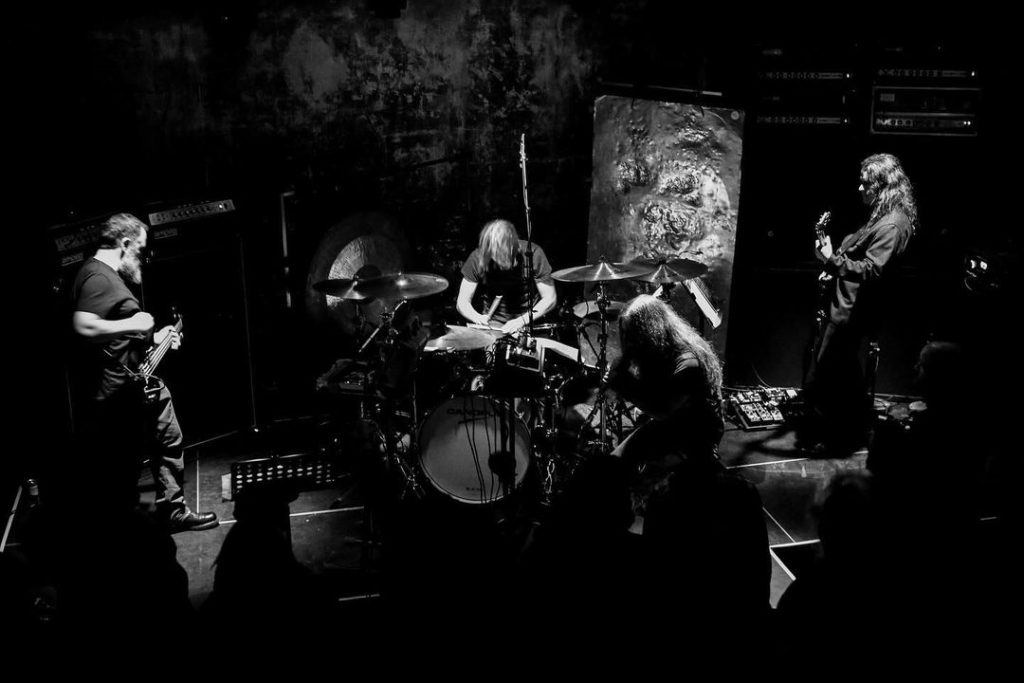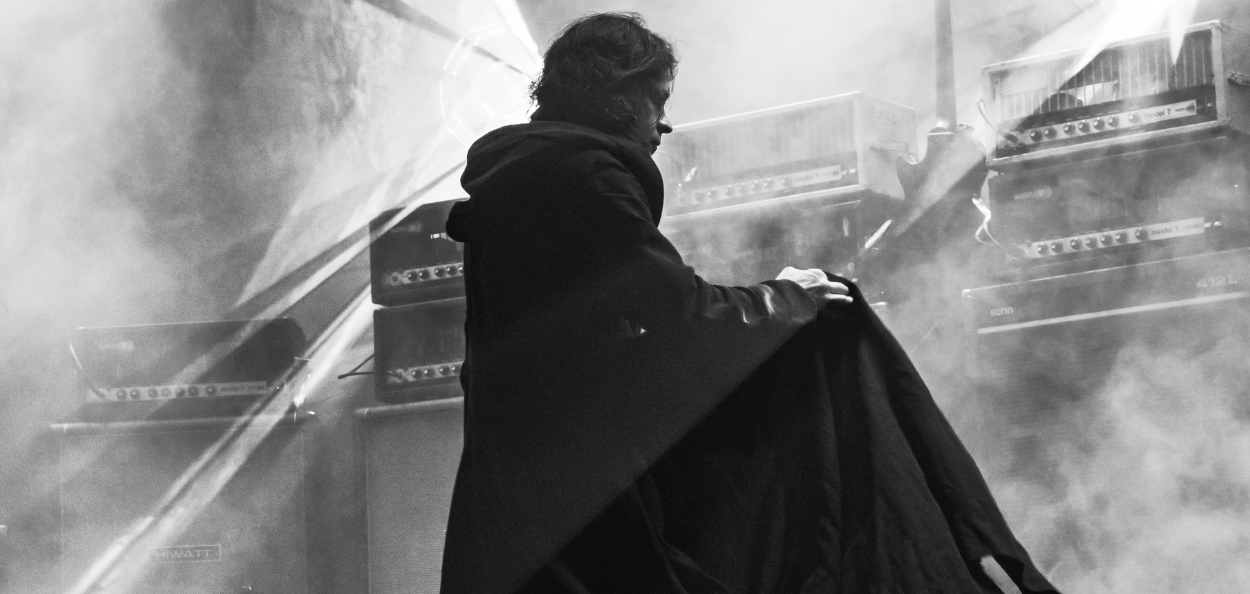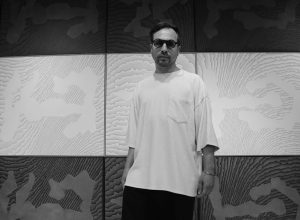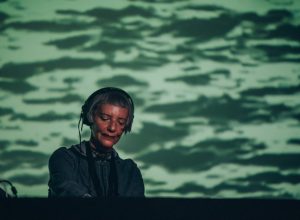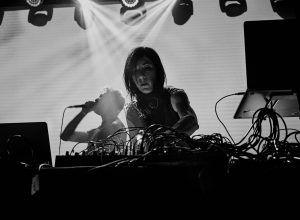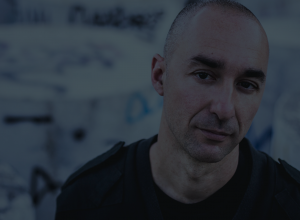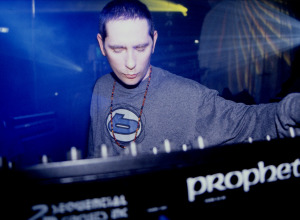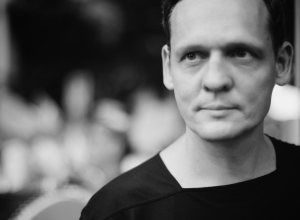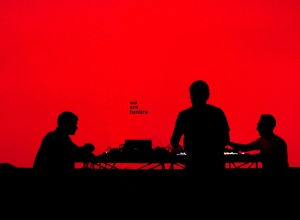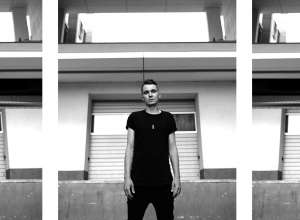In the realm of avant-garde music, Stephen O’Malley stands as a tireless visionary, deeply dedicated to his craft as a musician and composer. While his name is synonymous with the groundbreaking sound of Sunn O))) and, perhaps, the intensity of Khanate, O’Malley’s artistic endeavors extend far beyond these iconic groups. Undoubtedly, Sunn O))) has etched a transformative chapter in the musical landscape. However, delving into the intricate layers of Stephen’s musical world reveals a multifaceted artist, surpassing the confines of any singular affiliation.
His holistic and all-around approach, connecting music to other art forms, has tremendously shaped his mindset. By leading an extensive musician’s career for more than two decades and being part of numerous acts and projects, the insights and experiences he gained combined perfectly with his innate artistic curiosity. With creativity and a keen eye, he successfully cultivated his talent to overstep any border that would limit his focus and artistic ventures. The previous, however, wouldn’t have been possible if Stephen worked all those years by himself.
That collaboration concept has been ever-present in his journey. From his first musical impressions as a teenager being a bagpiper and drum corps member, until he embraced the straight-edge hardcore, or later on the underground black and death metal community in Seattle—the place he grew up—where there was already a strong sense of shared values, direction, and commitment. Being part of a like-minded group or cause has been a driving factor that eventually evolved into his broad state of artistic clarity and openness. Consequently, having conquered those traits, he now enjoys the fruit of his early curiosity while making room and providing a safe space for new ideas and means of expression for himself and those he’s closely working with.
Next to that, although his expertise was lying in music, he expanded on art direction and design. Since the mid-90s, he has created a couple of hundred visual works for albums and still keeps doing so. Forget not also that he was the curator of Descent Magazine, an underground metal series of publications. That activity allowed him to work with record labels such as Misanthropy Records. After relocating for a year in the UK, he returned to New York for the same line of work and also for advertising. Once this was over, he decided to pursue a full-time career as a musician.
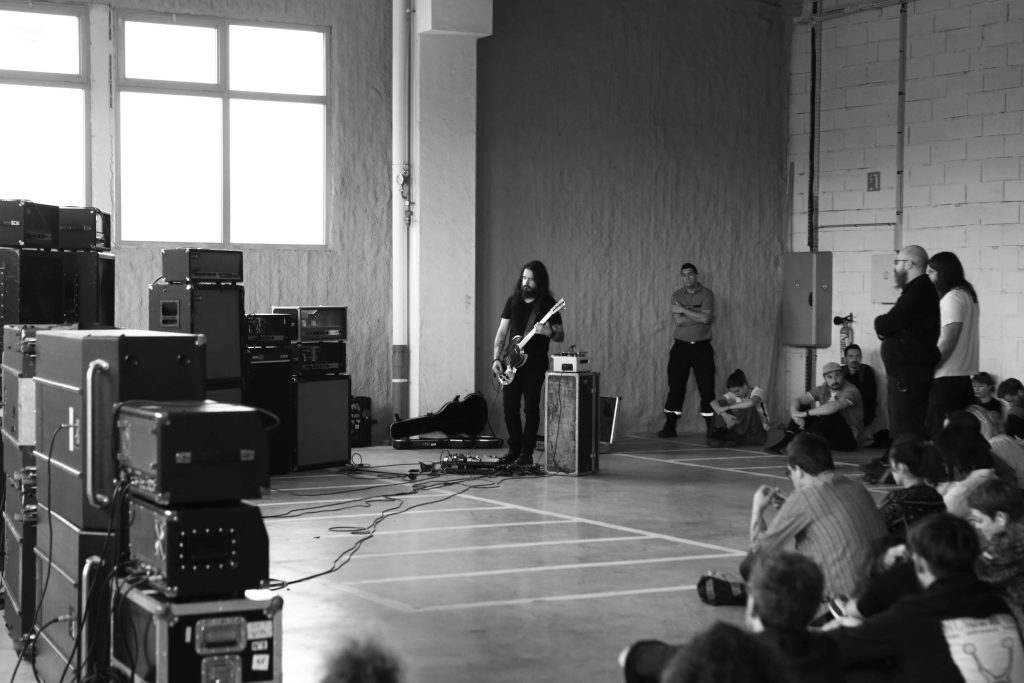
Although most known for his part in Sunn O))), Khanate, and KTL, he established connections with other creative non-musical minds. Through that, he shared and projected the artistic visions of a choreographer and theatre director, contemporary composers, sculptors, a photographer, filmmakers, and the ideas of a fashion designer. His collaborations also included compositions for various-sized ensembles, such as alphorn and percussion ensembles, electronics, and an electric guitar quartet. This constant exploration has naturally led to extensive touring across the globe. Whether with Sunn O))), the theatre company DACM, part of a musical group, or in a solo concert, he visited churches, museums, theatres, and numerous stages on almost every continent.
Last year was also very productive for Stephen. Not only did he release records with Sunn O))) and an unexpected one with Khanate, which even surprised the fans, but he also expanded his collaborations with many artists. He has also been highly active with his label Ideologic Organ while touring and participating in various live performances. For this year’s activities, there was a long spring-time tour with Sunn O))) in the band’s original, raw duo form, conceptualizing the Shoshin term with an exclusive split-label release available for purchase there. Beyond this, a few lives with Khanate followed and some appearances with Kali Malone. Regarding the label, the year started with the massive All Life Long release by Kali Malone, with Stephen accompanying her on the pipe organs and handling the production and album cover duties. Moreover, he hinted that many exciting upcoming releases are around the corner.
Finding Stephen amidst this eventful hurricane was a perfect opportunity for an all-around discussion. During our conversation, we covered a wide range of topics, such as his progress in the past year as an artist and label manager, his future agenda, and how he has grown through his experiences and collaborations. We also gained insight into some of the fundamental aspects and traits of his personality and identity as forged over the years. As you read through our conversation, you will notice that everything ultimately boils down to two essential principles.
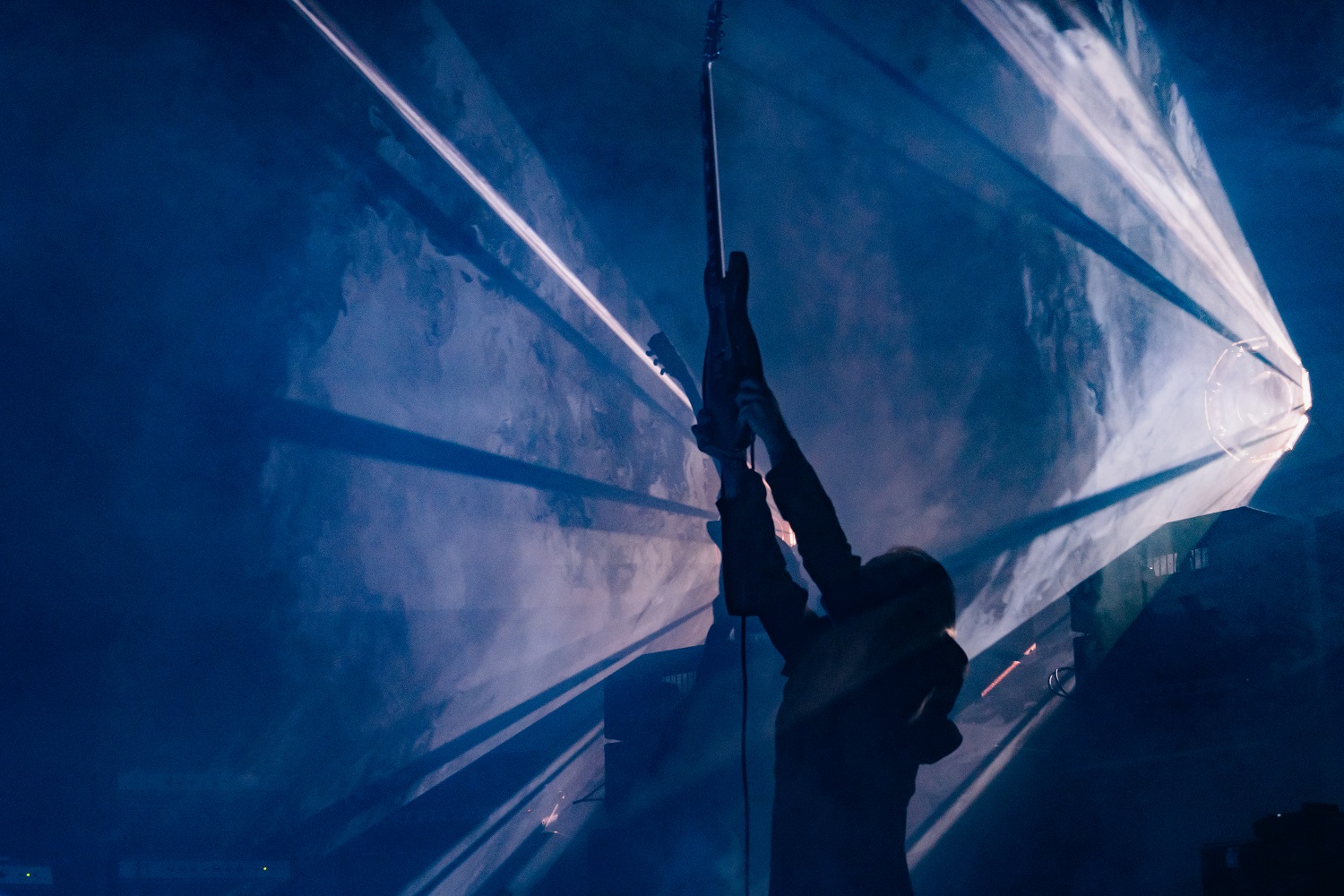
In 2023, you collaborated with Kali Malone and Anthony Pateras on two releases. Can you share more about those collaborations, the outcome, and their impact on you?
Stephen O’Malley: Well, what can I say? Those two were quite different in their ways of working. For example, the music I recorded with Anthony was written and recorded in two days. We were spending our entire time in a studio in Switzerland in La Becque artist residency on Lake Geneva. We moved there, set up a studio and played together. Then, we immediately recorded the music, which was our initial intention. At that time, my perspective was just me trying some things, being spontaneous, making some structures and synthesis, and doing the recording. Project-wise, while we had that moment, it was satisfying as a creative process.
Regarding Does Spring Hide Its Joy with Kali Malone, that was entirely different from the previous one. When we were making music, we were in Berlin during the COVID pandemic, and Kali wrote a piece of music for Lucy Railton, which she and I were playing. We also had access to a place called MONOM in the Funkhaus. Funkhaus is a massive complex with concert halls and studios where many artists and architects do things. Monom was a multi-channeled specialized sound-performance space studio workshop.
During the pandemic, everyone left Berlin, or at least the Funkhaus, and it simply was empty. Then, one who runs MONOM invited Kali to use it because it was lying there. Thus, we seized this opportunity to work on this composition sheet created for the three of us. Kali composed that music and we interpreted her score, recording in different concert halls in the Funkhaus for its various iterations. That piece has quite a respect for the character of the players she recorded it for, Lucy and I, providing a lot of space for our personalities to align. This whole thing lasted roughly about two months.
They are very different experiences, and I am fortunate I could participate in both. And even further, to release and share albums from those recordings. Does Spring Hide Its Joy has been performed in several other concerts since then. So, it has an impact on its own. We performed it in February in Sweden, and it’s just an incredible piece of music to return to. And although it happened under those conditions at first, there is still a sense of nostalgia when I return to its music.
Because of the whole environment around it.
SOM: Yes, because of what happened in the spring of 2020 for everyone. That specific period when our way of being alive slowly changed. Whether you were dealing with the virus directly or not, some people had some real tragedy along with significant challenges, of course. It was a particular time as far as temporalities are concerned. I am glad music was part of my life. When we performed that piece with Kali and Lucy, it was evocative with its contemplative space and structure. It’s very empathetic as far as the patterns interact, and it’s a true pleasure to go into that. As for the collaboration with Anthony, we had a live concert performance, so they’re pretty different projects.
You mentioned that, with Anthony, you had some spontaneity or improvisation going. So, a live performance would be something very unique, I believe, if you followed the same principle.
SOM: Anthony is a fantastic artist, composer, and musician. His compositional work is incredibly complex and vast, for which I have so much respect. I interacted with him as a piano player and in improvisation. Not only have we played a concert before, but we spent a lot of time together—a lot of work and a connection on a deeper level. Individually, our play styles have also evolved, too. The album we made is not a pompous one, but making that type of music was an incredible choice.

Would you like to describe your label? A few things about its background, aesthetic, purpose, and current status.
SOM: I started the label in 2011 with Peter Rehberg from Editions Mego. There was a moment when Peter wanted to expand the activities, using the resources from there, like its distribution, and working with other artists and friends as curators. One of the main activities was securing a label under the Mego as an umbrella. The music inspired him. Anyway, since then, we have released around fifty albums. The original concept was to release acoustic music by contemporary composers, so it quickly became an idea.
Now, it is reaching a point where it can be a support platform for various conceptual compositions. It is hard to find a common theme among these compositions. They may range from Eyvind Kang’s ensemble pieces, Carlos Giaponi’s solo synthesizer, and Kali Malone’s work to Ákos Rózmann. We released many archival pieces from Ákos Rózmann and Zia Mohiuddin Dagar and some other recordings, like from Ragnar Johnson. Therefore, we somehow created a space to make unreleased material accessible.
After the pandemic, a significant event massively changed the label. Peter Rehberg passed away in 2021, and amongst other things in my life that changed, there was the time to decide whether to continue with this or not. And the answer was yes. A big part of it was keeping connections with the GRM label, which was also part of the Mego envelope. I have also a very close friend there who found a new path for us, without Peter, by starting new collaborations with Shelter Press, the French publisher, and continuing with it. So, it took a while to transform the label to that stage. Currently, Ideologic Organ has been doing more in the last twelve months.
We have several albums planned this year. We are assuming some LPs, for example, by Japanese musician Ai Aso, also releasing new music by Timothy Archambault, Carlos Gifonni, a new unique project with a specific ancient Greek instrument, and Kali Malone’s latest. That, actually, was a massive project and very satisfying to work on on many levels. Apart from the releases, there are other plans, too. The label seems pretty active, like a non-profit type of thing. It is not so commercially focused but a space that allows someone to be specific and unique. For some artists like Eyvind Kang, Ákos Rózmann, Jessica Mayer, or Ragnar Johnson, Ideologic Organ stands as a platform for their music to be released.
So, the keyword here, I believe, is conceptual because you are also drawing this type of artist to your label. A concept for each album explores a unique narrative and is very fitting to the artists and the audience.
SOM: Conceptual art is something I feel is in the air of what I do for different labels and projects I am musically involved with. But it’s also a lens I use to discover something more. Like with Sunn O))); If I am viewing it as a conceptual project, it’s something different than just playing the guitar loud, for example. Not everyone needs to do this, though. However, I believe there has to be a conceptual basis as a foundation, especially in experimental music. Otherwise, getting individual stories and narratives out is pretty hard.
Actually, I wanted to ask you also about Sunn O))), as there has been some activity lately. So, how does the work you put there and the world you are shaping influence your other projects?
SOM: It has been a massive part of my activity for a long time. It’s at the core, or the root, of what I am working on, especially since 2007. When I moved to Europe that day in 2007, it changed into something we could achieve in more ways than we already made. Because there was more space between Greg Anderson and me, it opened a lot more possibilities to include other people and other ideas. We could make it more flexible and be able to change it in each iteration.
Many ideas came from other collaborations I had worked with. Especially from 2007 to around 2016-2017. During that time, I met a choreographer named Gisèle Vienne in France and got involved in her theatrical projects. Performing in theatre and the experiences gained by incorporating choreography, music, and light setups involved a deep collaboration between two artists in a structured way. And that approach applies to all of my work by assuming how to work with others. For example, in Ideologic Organ, we often wondered: “OK, can we even can?”
With Sunn O))) we also have this body of music that I can collaborate and work with someone by publishing something or just by being open to working with a dancer in Brussels, for example. I can also openly work with another kind of musician or artist from whom I don’t wholly understand the form. I try to find the openness to collaborate, which is common ground.
Thus, one of my main rules in Sunn O))) has been to bring that openness and curiosity as a base to the collaboration side and also art direction. I am so lucky to have this band in my life and also lucky it worked that way. I have the necessary space to try these things out and develop an idea by following those steps. It’s not very common for a band or a project to have so much flexibility. Something so simple!
But, today, Sunn O))) is like a world where we are doing a lot of things as a guitar duo. A lot of collaborations are happening with our light designer, soundman, and art team for our touring needs. And we’re also preparing new recordings with certain producers in certain places. Because with Sunn O))), at times, we had quite a big or different type(s) of ensemble(s) with singers and musicians, electronics, etc. Right now, it’s just the two of us doing music. However, at the core of it, collaborations happen. The scale is abysmal. It’s a company that requires a lot of planning and structure, making the tours where the releases are, all the merchandise, or where all the recruiting is happening for some of our experimental music. It’s quite a big project for which we are very fortunate.
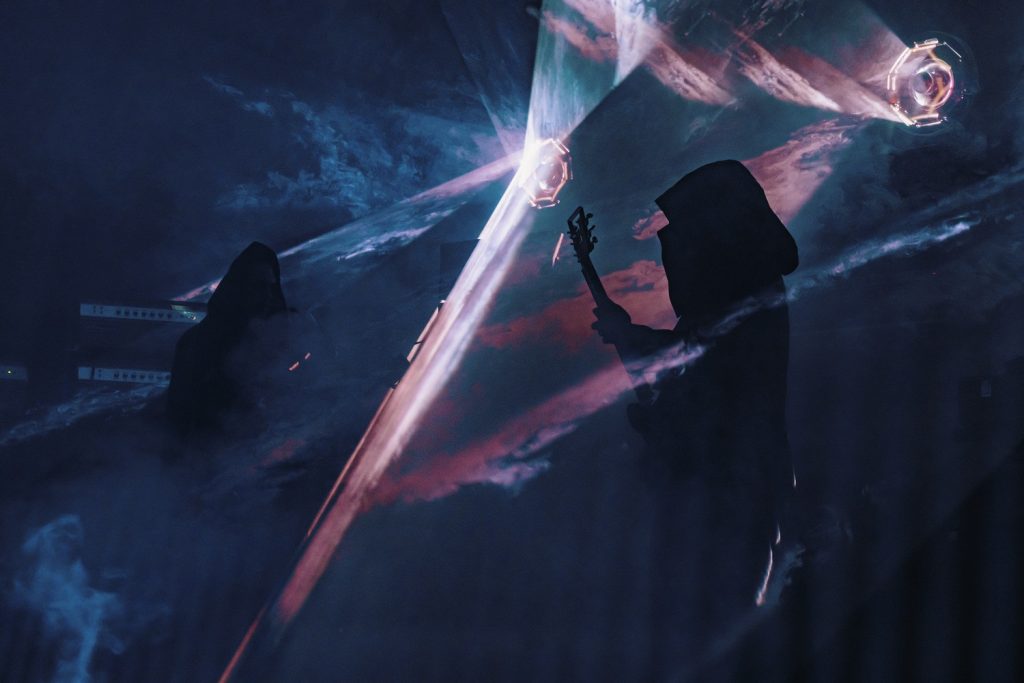
Considering all those years with Sunn O))), it really points in that direction. You also had the anniversary rehearsal demo in November and a tour for the spring of 2024. Can you share some information about this rehearsal demo? About the two tracks in it, and what prompted you to release it? Apart, of course, from being an anniversary one.
SOM: The truth is that we’ve released a couple of LPs on demos that we made over the years. And I like them! Around 2011 – 2012, we found a rehearsal demo from 1999—just a kind of reverse recording we also released. And, last year, Sunn O))) was twenty-five years old. We were doing some live concerts, but there wasn’t a big celebration show or focus on that in the way it could have been. But we got together to work on some mixing and ended up with a 7″ project we gave to Subpop. So, they invited us to do one for the infamous Subpop Singles Club, which was enjoyable. It’s a label we grew up with because we also grew up in Seattle. It was a fun project.
We did all those recordings on a tour stage in the afternoon soundchecks. During the concert days break, Greg and I used the opportunity to write music and work on new ideas, progressing and composing rather than rehearsing existing stuff. Some of those pieces are not repeatable because of what we were doing then. In those tour soundchecks, we just set up a multitrack in a recording setup and did all those recordings when we went to Brad Wood’s studio in Los Angeles. Then, edited some of those on our gears and to small repeaters, which became that 7″. In a session there, Greg Anderson brought some guitar equipment, and we did some takes. That was supposed to be the foundation of that LP. We felt pretty natural, and Brad recorded it and mixed it.
The whole idea of a rehearsal demo is a throwback for me. When I was growing up, as a teenager in my early 20s, I was deep in the underground death and black metal world—tape trading, doing a fanzine, collecting records, etc. To me, that rehearsal demo is a format that a band can do without equipment when they don’t have any money and are fresh at it, as they’re simply recording their songs in their practice space.
Back then it was common to share our music through tape trading. Sometimes, those recordings got this cult status because the first time you heard that music would be in that format. So the quality of that didn’t matter. Or, it became part of the aesthetic of that whole thing. The rarity of it was a huge part, too. Ten years later, it would be so cult that a record label would release it on CD, or LP, or—my favorite— format: picture LP of a rehearsal demo. That exists in the black metal scene and is a total collector-cult item. I think it’s fascinating and remarkable!
This rehearsal demo release, heavy nostalgic worship, is pressed too into a format that doesn’t sound very good. It’s a picture LP… so, all in all, that’s the real thing about its background. But for this one, as Sunn O))), we were recording in a studio on a multitrack, desk, and the rest. Technically, it was a rehearsal, but I like the phrasing, which adds some stimuli to the audience. To have those forms lined up in a structural reason or concept, as albums intended to be released.
Thus, we decided to press it ourselves as a split-label release, which is another kind of old throwback idea. Back to not owning a label, when you would cooperate to release a record with another label and then, ultimately, it was something to share that release in our shows so those who would attend can access that. Hopefully, the fans got excited by that kind of thing!
In fact, I read that this split-label release is an exclusive purchase in the spring tour. From what you shared, it seems that those rehearsals are a snapshot of your band’s status or activities, but, in addition, it complements the whole direction that you are heading towards. From our discussion, I understand its reason, and I am also much of a fan of those because of their crudeness—I mean crude based on the sound or spontaneity. I don’t know if you understand what I mean.
SOM: Yeah, I do. It’s raw. And, somehow, if it had been jazz music, we would use a different language because that’s how jazz music gets recorded. It’s a live performance, classically. And free jazz, of course, only exists in that recording in some sense. But Sunn O))) isn’t free jazz music. We embody the spirit of that stuff in ourselves as musicians who would love that kind of music, too. So, it also touches us on things like that. Honestly, it’s a great recording. It’s a cool LP with Greg and I, and it’s very raw.
So, now that we mentioned the tour, it seems that it was a back-to-the-roots case in its original form. And there’s this Shoshin duo concept. So, what are the thoughts behind such a direction? Can you describe the format a bit?
SOM: I don’t feel like it’s going back to anything. That’s not the way I would put it. But I did write that text in a certain way. We are where we are right now. It’s not a return, nostalgia, or throwback. Musically, it exists where we are currently. So, that concept is doing it historically. It’s the core of all the music Sunn O))) has done spending time with two guitars and that’s also where it’s at now.
I think it’s interesting, as it is so exciting and enjoyable. And it feels fresh and new to be doing that right now, although we’ve been making music with Sunn O))) for twenty-five years. Even when the band was ten years old, we did a tour just as a duo, two guitars, and we found the term Shoshin—I can’t believe it has already been that long since we’ve been using that term. I will explain what it means, and you will see it.
I feel that it is a perfect term for what Sunn O))) is doing. It’s a term coming from Zen Buddhism, which translates roughly to the mind of the beginner, or beginner’s mind, or someone who isn’t a master who will always come to a new challenge or a problem as a beginner. With no preconceptions, prejudice, or bias, just curiosity with a clear mind and an open heart. We talk about the beginner’s mind, but in Buddhism, the mind and the heart are part of the same system: Connection to the environment, being open to the environment and to other people, being connected to the environment and being open to the emptiness, while end up seeing the futility of it all, as well as the state of how things are. So, this is the philosophy we’re in.
There’s more over the decades, too, and I am so happy and grateful that we found that term. It’s just so appropriate. Also, Sunn O))) can be described in so many ways. From being like a doom metal band to an experimental sound saturation or physicality, sound-physicality, to contemporary music, or a kind of strange minimalistic music. For me, it represents something that is there. It’s at the core in which I can enter and be part of, like what we do with the Shoshin.
Has Shoshin also been the core from the start?
SOM: In 2008, when the band was ten years old, Greg encountered that term, embarked on that, and brought up this idea. He was like: “Hey, check it out. You might like it. Maybe we should use it. Maybe use it in our communication or to describe this tour we are going to do as a duo.” But it wasn’t right from the start. It was after we had explored a lot of collaborations and ensembles that we decided to implement it in addition to just playing as a duo. For the first time, it probably seemed different in specific ways from what we are currently.
So, if you also trace back to those years and how those things became your nature, how would you describe your artistic output and identity after those years of involvement in such a wide field of music?
SOM: Oh, I don’t know! I mean, I wouldn’t want to talk about it. What can I say? We know that you only grow and develop and ultimately take care of yourself more. As you go through life, you discover tools to respect yourself, others, and the world. Hopefully, you will find those tools, concepts, and philosophies. It’s so vital to make the most of it. Do you know what I mean?
Well, if you combine something, make the most of it!
SOM: Hehe, that’s life! Maybe your life has been focused on becoming a better writer or a better listener or a journalist. Similarly, mine was about being a better collaborator, listener, more honest with myself creatively, and allowing things I don’t understand to emerge. And part of that is learning how to take care of my situation. For me, it’s essential to have the time needed to evolve and involve the coming of spirituality as a sentiment. I had to accept my life as this is what I am. That is what I want to try to do and what I have to be able to work with. Consequently, a lot of that happens with music, art, and people, as well.
Regarding the latter, you collaborate with people from different art fields besides music. I wanted to ask how easy it has been to expand your personal vision and form of expression to match other artistic ideas and what you experience in general.
SOM: There’s an artist named Banks Violette who I have been in touch with recently. He’s someone I noticed since the early 2000s, and we worked together on some of his pieces in the past. He’s a sculptor. And then we lost contact in one way or another. He had a retrospective exhibition opening in Belgium, and we’ve been in touch for a while. That could have been something quite interesting to reflect on.
It’s just incredible who we knew and how we ended up in a situation, at various points in our life, that we were super lucky to be in that place at the right time, with the right people, because all of those things stack up to allow creative moments together. And, I guess those creative moments are what make this collaboration. Like: “How did you work with that person?” You put yourself in places in the world in temporality, and a big part of it is being open to it. And I feel like I had some. I can contrast it with my background and education, and I have had some incredible moments so far. And continue to do so, too!
The recent work with Kali Malone is just excellent and it’s a different kind of art. She’s a composer working with techniques that feel familiar but have been significantly developed and directed towards reaching all those pieces of ideas with harmony, early modern music, and pipe organs. I’ve been accompanying her on the pipe organ shows, as well, as a second player, and we played two big concerts in Berlin last year. It was amazing to be able to play on instruments like that and play her type of music. It’s a powerful work, important too, and sensitive to the audience. They’re like a sponge waiting, needing this experience to contemplate over two hours of music.
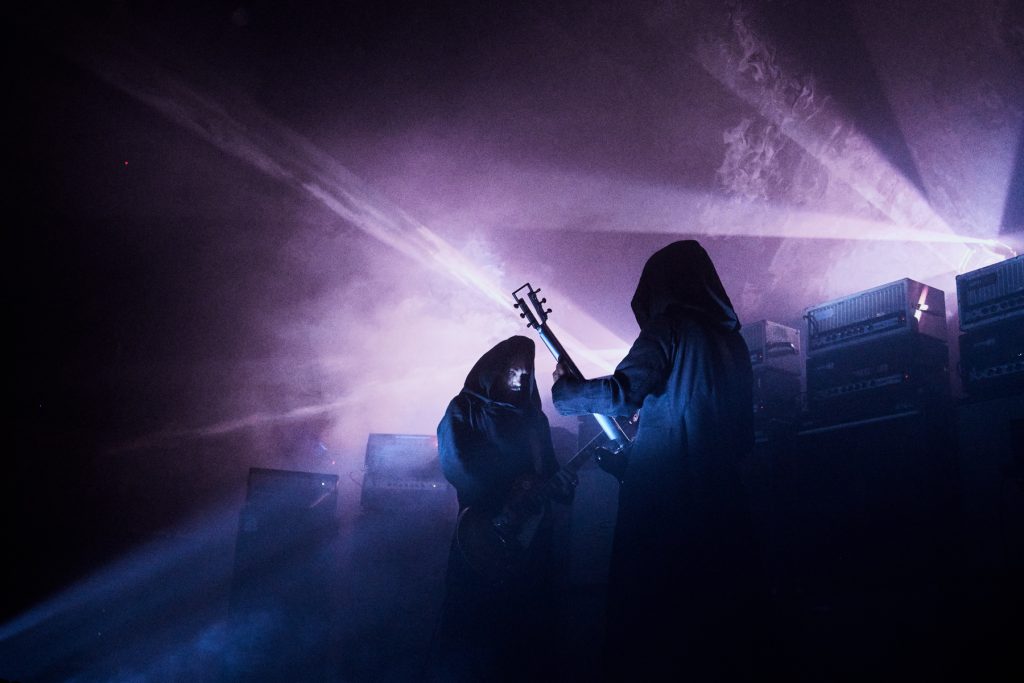
It’s challenging to share someone else’s vision. Even more so if it’s not in a field you excel at, like music. However, it definitely evolves your sound and aesthetic in general. And considering all those activities, collaborations, and projects you worked with, do you know how all of those improved your perspective and work? Even your sound, perhaps.
SOM: I don’t know. If I analyze it, I can find an answer to that. I am just being present and continue to be present for things happening right now or about to happen. One thing that is interesting about this whole collaboration idea, and the language we applied in the Shoshin discussion, is that there’s like a structure of thinking about how people work and can work together based on corporate or capitalist hierarchy. There, you have people from different departments that come together and have an agreeable path supported by evidence to work with something as a sum, involving negotiation and other things.
I am not saying or suggesting that is the exact way to work at it. But, it is interesting to contemplate that as a defect in the illusion that working with people from different fields, artistically, can be difficult. Because I found out that, and I think many great collaborations are happening that way, they have to be in specific fields like opera, film, or cinema for the structure to be necessary to produce a work of that magnitude. On a small scale, individual or even small group basis, you can trust and just let go and see what happens – be surprised, open, and curious. It only requires releasing the control of that hierarchical concept, and the expectation has to be something that pre-determinedly understands and projects upon because there’s just magic that happens.
At first, I wondered how they even reached that point and how did that happen? But then, being open and recognizing similarities in the practical workflow has been crucial. What is important is what is happening that we don’t know about before or during the discoveries and processes. Doing this without valuing judgment has been one of my main criteria for creativity in my path. This mindset has made me more open to creativity in general and around this collaboration concept. Moreover, I see to some of the people I collaborate with that the expectation of having control, the hierarchy, or the need to have that has sometimes hindered the prosperity of just discovering something new.
However, it’s not for everyone to let go of that too artistically. Some artists are very into their vision and need to be on that structured path, and they can’t give their stuff away to someone else. But, for me, it’s been a big part of my artistic journey. That’s been very valuable in growing as a person, artist, musician, communicator, and everything like that—trying to find that openness. And it feels like it can’t always work. Sometimes, you break relationships; occasionally, it’s a great relationship that doesn’t work. To conclude, I also needed to be open to that to find out what is meaningful.
So, would you say that being open and present at the moment are the two critical factors for your drive and motivation? Or is there something else that does that?
SOM: Well, both! And more! It’s not only one or the other, and there are a lot of things that change at different times, too. The only thing you have to give to other people is your attention and yourself. Whether it requires working with people or any other kind of interaction—that’s openness and presence.
So, through all those collaborations and activities you did, something good happened that really boosted you at that time and helped you take care of yourself better and even find balance. Is that correct?
SOM: Indeed, there was a long period for me when I had a lot of opportunities. My attitude towards those was to do everything right now because, in the future, it might not be there. And that was a problem I had to deal with or, rather, a motivation I found to do everything. I had to take all of those opportunities. Eventually, I was like, it’s not stopping, and all my time is going away in this kind of behavior. And it’s too much. Finding balance in that was hard because I had that kind of thought. All of these opportunities are necessary as there are moments when things are not happening. Being an underground artist, at least in my background, it felt like you had to take all the gigs you could get. Otherwise, you would be out of work!
As someone mainly involved with the metal genre, what led you to explore the electronic side of music? Is there a certain appeal to you in that?
SOM: It might look like I am involved in the metal genre, but I haven’t been for about twenty years. However, it’s not only that. It’s not like I turn my back on it and become interested only in electronic music, as you put it. However, we’ve consistently and hugely been, and Sunn O))) has always been super open to music in general. I think Sunn O)))’s place is pretty unique. We have some semi-commercial space for a live act while simultaneously we are respected artistically for our work. We have built this place, which is open to many different types of experimental musicians from varied backgrounds. But it’s too complex to mix that with genres, the way I think.
Certainly, by mixing things with genres, you may take the point out. But, I wanted to understand if there is an aspect of each type of music that appeals to you in a certain way.
SOM: For sure, there is! We have a lot of music. You can ask specific things about certain types of music, people, or musicians, and I can explain what I like about them. I think it’s interesting that to lots of people, it looks like we’re coming out of metal and escaping it. That viewpoint is pretty interesting because it’s so funny! It seems that we can’t get over the origin myth of Sunn O))). We started as a doom, and the doom was an underground scene, and then we escaped. Nowadays, it validated something more than that. Probably the viewpoint of Sunn O))) is as: “Oh.. those guys!” or, “Stephen O’Malley looks like he’s metal from the metal scene, but he doesn’t like metal.” Or, “That’s not a metal band—you can’t take it seriously as a metal band.”
I completely understand, Stephen, because I also come from a metal background.
SOM: You know what I mean? Yeah, a lot of us do! And a lot of people come from punk and hardcore. It’s weird how this thing with genres kind of overloads things. However, when you talk to people at your level, they say they had to start from somewhere. Then, you become curious about discovering and having this joy from different kinds of music, making the whole genre concept super complex math. At the same time, you can be heavily into Napkin Cole and Carsten Nicolai or whoever. It’s no problem on your playlist. It’s like: “Why should it be one or the other?”
Did you ever have a project or a specific work that your audience unexpectedly embraced? If so, how did that make you feel?
SOM: Recently, I did a new record with this band called Khanate, which I had while I was in New York. We stopped playing together in 2006, but we reconnected over the last couple of years and made To Be Cruel. That came out last year, and a lot has happened in those years since then. Our awareness and everyone in the group has already done so much work. And, of course, the musical world is very different. When that album came out, we announced it and released it on the same day. No one knew it was happening. We just wanted to do it that way! But I liked it and maybe laughed a bit because some people were so happy about it. It brought them a lot of joy despite the music being negative, complex, and challenging.
